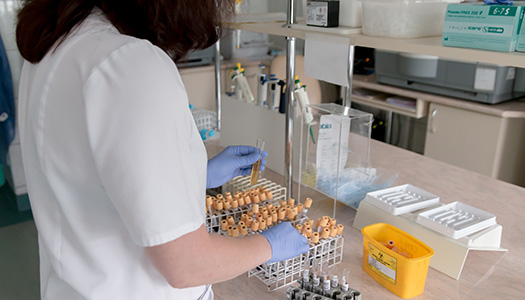Anemia (Iron Deficiency)
Anemia occurs when a person has lower-than-normal levels of red blood cells (RBCs) in the blood. There are many factors that can contribute to lower-than-normal RBC counts, including age, viral infections, and certain chronic diseases .
Iron-deficiency anemia is the most common type of anemia, which occurs when your body does not have enough of the mineral iron.
Your body needs iron to produce a protein called hemoglobin, which is responsible for carrying oxygen to your body’s tissues. Your tissues and muscles need oxygen to function effectively.
This condition is normally treated with iron supplements.
Causes:
Inadequate Iron Intake:
Eating too little iron over an extended amount of time can cause a shortage in your body.
Pregnancy or Blood Loss Due to Menstruation:
In women of child-bearing age, the most common causes of iron-deficiency anemia are heavy menstrual bleeding or blood loss during childbirth. Nine percent of women ages 12 to 49 years are deficient in iron .
Internal Bleeding:
Certain medical conditions can cause internal bleeding, which can lead to iron-deficient anemia. Examples include an ulcer in your stomach, polyps(tissue growths) in the colon or intestines, or colon cancer. Regular use of pain relievers, such as aspirin, can also cause bleeding in the stomach.
Inability to Absorb Iron:
Certain disorders or surgeries that affect the intestines can also interfere with how your body absorbs iron. Even if you get enough iron in your diet, Celiac disease or an intestinal surgery such as gastric bypass may limit the amount of iron your body can absorb.
Who Is at Risk for Iron-Deficiency Anemia?
Anemia is a common condition and can occur in both men and women, in all ages and ethnic groups. The risk for iron-deficiency anemia is higher in the following groups:
- women of child-bearing age
- pregnant women
- people with poor diets
- frequent blood donors
- infants and children, especially those born prematurely or experiencing a growth spurt
- vegetarians who do not replace meat with another iron-rich food
Symptoms:
Symptoms of iron-deficiency anemia can be very mild at first, and may go completely unnoticed. In fact, most people do not realize they have mild anemia until it is identified in a routine blood test
- general fatigue
- weakness
- pale skin
- shortness of breath
- dizziness
- strange cravings for non-food items, such as dirt, ice, and clay
- tingling or a crawling feeling in the legs
- swelling or soreness in the tongue
- cold hands and feet
- fast or irregular heartbeat
- brittle nails
- headaches
Preventions:
When caused by inadequate iron intake, iron-deficiency anemia can be prevented by eating a diet high in iron-rich foods and vitamin C. Mothers should make sure to feed their babies breast milk or iron-fortified infant formula.
Foods high in iron include:
- meat, such as lamb, pork, chicken, and beef
- beans
- pumpkin and squash seeds
- leafy greens, such as spinach
- raisins and other dried fruit
- eggs
- seafood, such as clams, sardines, shrimp, and oysters
- iron-fortified dry and instant cereals
Foods high in vitamin C include:
- citrus fruits, such as oranges, grapefruit, strawberries, kiwis, guava, papaya, pineapple, melons, and mango
- broccoli
- red and green bell peppers
- Brussels sprouts
- cauliflower
- tomatoes
- leafy greens
Homoeopathic Remedies:
Along with the precautions (mentioned above) constitutional Homoeopathic medicines will help the patient to maintain and produce haemoglobin and thus increase the immunity.
Some of the remedies to be thought of in case of anaemia are Ferrum Ars, Arsenic Album, Nitric Acid, Natrum Mur, Graphites, Pulsatilla, Magnum, Medhorrium, Sulphur Acid and Sulphur







